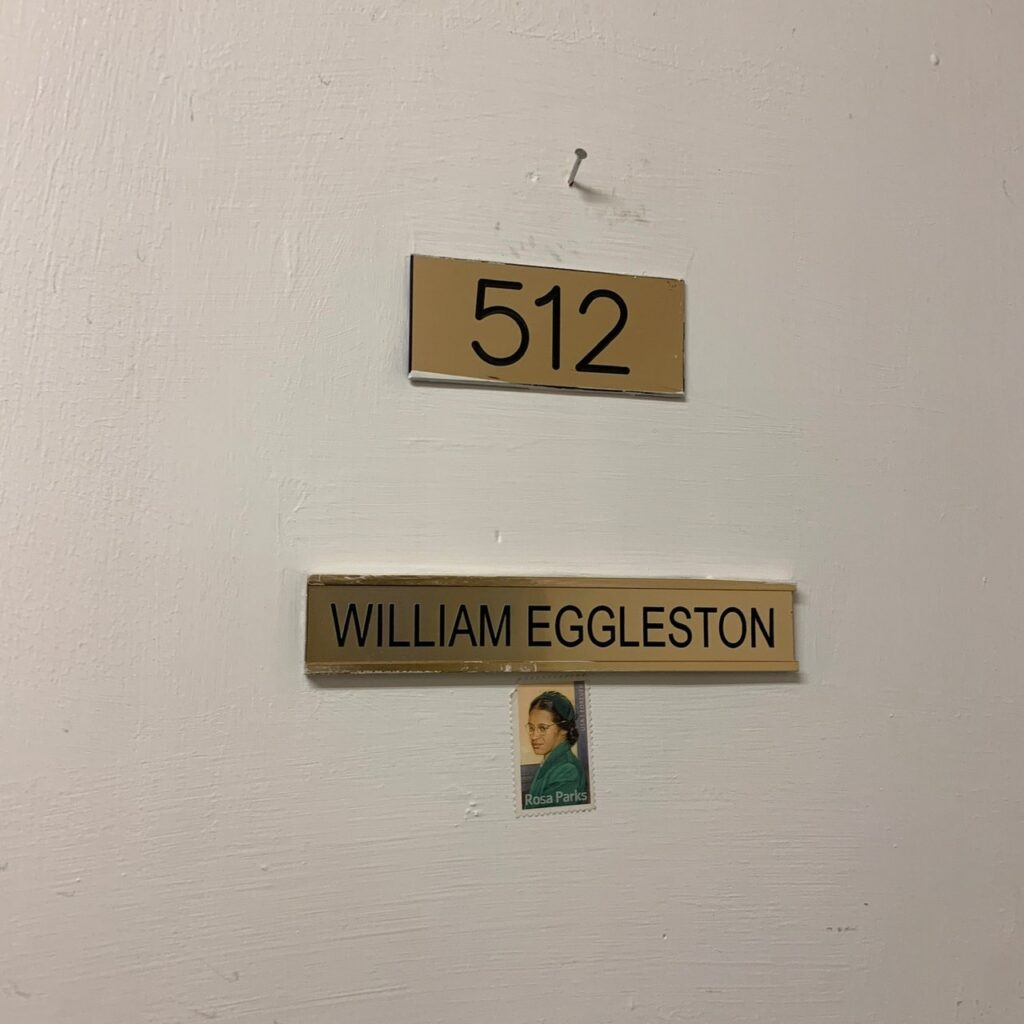William Eggleston’s music, like his photography, lives in vivid color. The 84-year-old artist helped establish color photography as a medium worthy of institutional attention, elevating what was once considered purely commercial to the level of serious art. His photos are shot quickly, yet retain an honest, lived-in quality—in part thanks to his longstanding preoccupation with domestic interiors, aloof inlaws, personal trinkets, and other eccentricities of the American South. Roving and somewhat stiff, his 2017 album Musik unearthed a side of the photographer’s life once relegated to footnote status, compiling decades-old recordings captured on a Korg OW/1 FD Pro synthesizer. 512, Eggleston’s newly recorded follow-up, features warmer and more spacious improvisational piano compositions with an intimate, wide-eyed charm.
The album takes its name from the unit number for Eggleston’s Memphis apartment, where it was recorded, and the music itself has a loose, domestic feel. A gentle brush of incidental noise in the opening moments of “Improvisation” places Eggleston at the piano bench, muttering under his breath before he’s joined by Brian Eno on bells. Eno’s touches are light and restrained, distinctly secondary to the tense stabs from Eggleston. The recordings have some continuity with the modernist lineage of jazz, or perhaps minimalism by way of Eno, but are more strongly influenced by the traditional folk and gospel music played on upright pianos across the U.S. for so much of the nation’s early history. The result is delightfully anachronistic and full of life.
The record’s liveliness is partly thanks to choices made by producer Tom Lunt, who joined Eggleston in Memphis for the recording sessions. As both co-founder of the Numero Group and the archivist responsible for breathing new life into Eggleston’s earlier material, Lunt has a deep understanding of tradition. He invited session musicians like Sam Amidon, Matana Roberts, and Leo Abrahams to perform on the record, each adding subtle flourishes. “Ol’ Man River” is stoic and melancholy, with rolling fiddle and banjo lines from Amidon. “Smoke Gets in Your Eyes” achieves a similar depth of feeling by way of Roberts’ rich saxophone, which peek through in the piece’s softest moments.
While “Improvisation” and “That’s Some Robert Burns” are both original compositions, the album’s other four tracks are all American songbook standards. “Ol’ Man River,” “Smoke Gets in Your Eyes,” and “Over the Rainbow” all began life as sentimental show tunes, while “Onward Christian Soldiers” is an Anglican hymn that dates back to the mid-19th century. This distinction is, however, ultimately of little consequence for Eggleston, who strays away from anything resembling convention with his improvisations. “Onward Christian Soldiers” moves from pulsing minimalism to discordant jazz and back again, while “Over the Rainbow” leans into the delicate “soft pedal” technique so closely associated with Harold Budd. But where Budd uses the technique to achieve an icy distance on Eno-assisted albums like The Pearl, Eggleston’s playing is strikingly present, with a pastoral glow.
So much about the world has changed since Eggleston first took up the piano, his “first calling” before the camera, in the early 1940s. Where his earlier archival recordings can feel rote and mechanical, like a bit of idle rehearsal time, 512 shows Eggleston reinterpreting his own past and the Southern musical traditions he grew up with. Much like his photographs, which once felt outrageously ordinary, his music provides a snapshot of the changing conditions of his life. 512 looks back with a full-hearted delight.
All products featured on Pitchfork are independently selected by our editors. However, when you buy something through our retail links, we may earn an affiliate commission.

